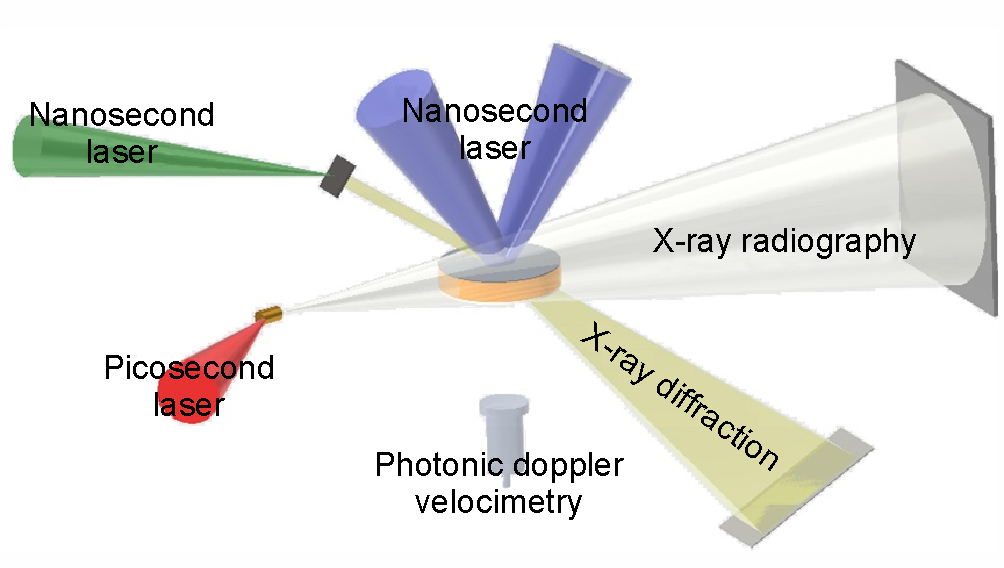Understanding the reaction kinetics of energetic materials significantly influences their detonation traits and safety.

The Pump-Probe Experiments at High-Intensity Laser Facilities. Image Credit: Energetic Materials Frontiers
However, the intricate nature of the reaction process and the limited experimental methods pose a significant challenge in both experimental studies and precise modeling. To precisely forecast the detonation behavior and safety aspects of these materials, it is crucial to elucidate the reaction mechanism and dynamic processes accurately.
Large laser facilities’ pump-probe experiments offer a variety of adaptable load and probe combinations for the investigation of high explosives’ reaction kinetics and dynamic processes across a broad temporal and spatial range. A team of Chinese researchers described the advancements, sophisticated pump-probe experiment techniques, and examinations of big laser facilities in a study that was published in the KeAi journal Energetic Materials Frontiers.
The group provides preliminary findings from dynamic flyer imaging, excited-state dynamics, dynamic explosive X-Ray diffraction, and overdriven detonation. Additionally, they described how the intricacies of explosive reaction kinetics can be understood by examining the internal deformation, phase transition, and ultrafast dynamics under dynamic loading at high spatial and temporal resolutions.
These experiments represent a significant challenge since it is essential to develop a new generation of in situ diagnostics for angstrom-to millimeter-scale lengths. The ultimate goal of pump-probe experiments that combine both optical and X-Ray (or other particles) probes is to achieve the femtosecond imaging of chemical reactions at material surfaces and interfaces or buried within a compressed sample with an atomic-scale spatial resolution.
Gen-bai Chu, Study Lead Author, Laser Fusion Research Center, China Academy of Engineering Physics
Four essential steps are highlighted by the authors. Initially, a laser loading mechanism drives a configurable pressure range from low-pressure ignition to overdriven detonation using micron-sized explosives. Second, the creation of novel and dependable starting devices as well as the performance optimization of explosive foils are greatly aided by the use of high-resolution transient X-Ray radiography, which makes it possible to examine the microstructural evolution of high-energy explosives under dynamic loading.
Third, the crystal structure, phase fraction, grain size, and chemical reaction products of explosives under dynamic loading are crucial elements to comprehend the igniting and detonation mechanisms of explosives. Lastly, the investigation of structural, geometrical, and chemical changes following electronic or vibrational activation is made possible by ultrafast laser spectroscopy.
Going forward, pump-probe experiments can be used to study complex reactions involving the coupling effect of chemical reactions and shock waves to obtain in-depth understandings of bond breaking/formation, local energy populations and their redistribution, changes in structure and stoichiometry, phase separation, and kinetics under dynamic loading.
Gen-bai Chu, Study Lead Author, Laser Fusion Research Center, China Academy of Engineering Physics
Journal Reference
Chu, G., et al. (2023). Recent progress in research on the dynamic process of high-energy explosives through pump-probe experiments at high-intensity laser facilities. Energetic Materials Frontiers. /doi.org/10.1016/j.enmf.2023.06.003